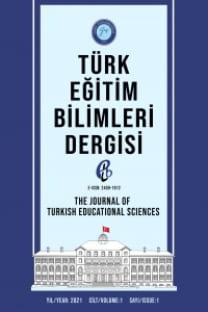ADLİ BELGE İNCELEMEDE GÜZEL SANATLAR AKADEMİSYENLERİNE GEREKSİNİMLER, YETERLİLİKLERİ VE UYGULAMADAN KAYNAKLANAN SORUNLAR
Belge sahteciliği, günümüzde yaşanan, kişilerin ve kurumların haklarını gasp eden bir suç olarak artarak çeşitlenip süregelen bir sorun haline dönüşmüştür. Adli belge inceleme veya diğer bir adıyla Grafoloji bilimi ise, teknolojik, ekonomik gelişmelerle günden güne artan bu sorunun çözümlenmesi amacıyla ortaya çıkan, adalete hizmet eden, bilim alanı haline dönüşmüştür. Kriminal biliminin bir dalı olarak bilinen adli belge inceleme (Grafoloji) hizmeti, ülkemizde Emniyet Kriminal, Adli Tıp, Jandarma Kriminal, belge inceleme uzmanları ve son olarak da Güzel Sanatların ilgili alanından akademisyenler tarafından yapılmaktadır. Adli süreçteki uygulamalarda inceleme raporlarına itiraz durumunda bir sonraki inceleme için genel olarak, yukarıdaki sıralama izlenmekte, son inceleme için Güzel Sanatların ilgili alan akademisyenlerinin görüş ve kanaatleri alınmakta, verilen rapora göre karar aşamasına gidilmektedir. Güzel Sanatların “Grafik” alanı akademisyenlerini tercih; bilgi birikim ve donanımlarıyla gözden kaçan bir delilin tespiti ve son bilirkişi olarak, gerçek veya sahte bir imza veya yazının tespit ve saptanması yönünde yorum ve kanaatlerinin daha güçlü ve doğru olabileceği yönündeki beklentilerden kaynaklanmaktadır. Ancak Güzel Sanatların ilgili akademisyenlerinin seçiminde önemli bir sorun yaşanmakta, alan dışından veya yan alandan akademisyenler de bu hizmette görev alabilmekte ve adaletin uygulanmasında son derece hassas olan bir kararı etkileyebilmektedirler. Bu çalışmada, Güzel Sanatlarda alanıyla doğrudan ilgili akademisyenlerin seçiminin, kriminal laboratuvarları ile koordineli çalışılmasının, bilimsel ve teknolojik bilgi alışverişinde bulunmasının önemine değinilmiştir.
Anahtar Kelimeler:
Grafoloji, adli belge inceleme, güzel sanatlar, grafik, akademisyen
THE DEMAND FOR FINE ARTS ACADEMICIANS DURING FORENSIC DOCUMENT EXAMINATION, THEIR COMPETENCIES AND PROBLEMS ARISING FROM SUCH AN APPLICATION
Nowadays, documentary fraud, has turned into an ongoing problem which has increased and diversified as a crime which seizes the rights of people and organizations. The science of examination of forensic documents or in other words graphology, has evolved into a field of science which serves justice and which has emerged in order to solve said problem which has been increasing day by day along with technological and economic developments. The forensic document examination (Graphology) service which is known as a branch of criminology is carried out in our country by forensic document examination experts working in the Security, Crime Unit, Forensics, Gendarmerie criminal department, and lately by academicians related to the field of Fine Arts. In the case of an objection against the examination reports in applications concerning the judicial process, the above mentioned order is followed generally for a follow up examination, during the final examination the opinions and decisions of the academicians related to the field of Fine Arts are taken and the decision of the court is obtained in accordance with the report given. The reason of preferring academicians from the “Graphics” field of Fine Arts is that it is believed and anticipated that the opinions and decisions regarding the determination and finding of an original, forged signature or writing and determination of proof which could have been overlooked could be stronger and more precise due to the knowledge and know-how of such academicians. However an important problem is faced during the selection of such academicians related with Fine Arts, as academicians who are not included in this field could be employed to give this service and such people could be affecting a decision which is very delicate in carrying out justice. It should not be overlooked that the decision reports that academic experts could affect the reports of prior related experts and organizations. In this study the importance of paying attention to the specialty fields of academicians during the selection of academicians which should be directly related to Fine Arts, for such academicians to be able to work in coordination with criminal laboratories, to be able to exchange scientific and technological information, has been emphasized. In conclusion in order to educate and raise academicians in Fine arts which are being employed to examine forensic documents, the necessity to include the course of graphology in the graduate or postgraduate degrees, either as a sub branch or as an elective course in the syllabus, has emerged.
Keywords:
Graphology, examination of forensic documents, fine arts, graphic, academician,
___
- Aydoğdu, E. ve Ataç, Y. (2011). İmza sahteciliğinin türleri, tespiti ve önlenmesi.Polis Bilimleri Dergisi, (2), 49. Internet’ten 26Haziran 2013 Saat 07.12,de elde edilmiştir. http://www.pa.edu.tr/?app=43154E4A-94D7-4BA2-8BB8-D76C832A88FA.
- Baltacıoğlu, İ. H. (2013). Grafoloji konusu, metodu, prensipleri. Internet’ten 27Haziran 2013 Saat 13.00,te elde edilmiştir.http://dergiler.ankara.edu.tr/dergiler/26/1244/14211.pdf.
- Birincioğlu, İ. ve Özkara,E. (2010). Adli belge incelemelerinde bilinmeyenler, örneklerle yazı ve imza analizi ile ıslak imza kavramı.http://tbbdergisi.barobirlik.org.tr/m2010-87-615.
- Ketizmen, A. veKeskin, H.(2008).Sahteciliğe karşı geliştirilmiş kıymetli kağıt ve Belgelerin tasarım ve teknolojik özellikleri, örnek bir resmi belge tasarım önerisi. Gazi Üniversitesi Bilimsel Araştırma Projesi, Ankara.
- Marmara, N.(1994).El yazısının kişiye ait olup olmadığını belirleyen grafik göstergeler (Yayımlanmamış doktora tezi).İstanbul Üniversitesi, İstanbul.
- Abider, Adli Belge İncele Derneği web sayfası, Adli belge incelemesi nedir?, Internet’ten 25 Haziran 2013 Saat;10.18,elde edilmiştir.
- http://www.abider.org/index.php/faqs
- Gazi Üniversitesi, Bilişim Enstitüsü, Adli Bilimler Anabilim dalı, ders programları Internet’ten 28 Haziran 2013 Saat;14:.12,elde edilmiştir.
- http://be.gazi.edu.tr/posts/ view/title/adli-bilisim-70721#akademik,
- İstanbul Adliyesi, Resmi web sayfası 26 Haziran 2013,Internet’ten 26Haziran 2013 Saat;14.11,de elde edilmiştir. http://www.istanbul.adalet.gov.tr/duyuru/2012bilirkisi.pdf
- Başlangıç: 2003
- Yayıncı: ANKARA HACI BAYRAM VELİ ÜNİVERSİTESİ
